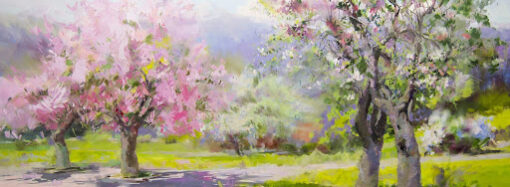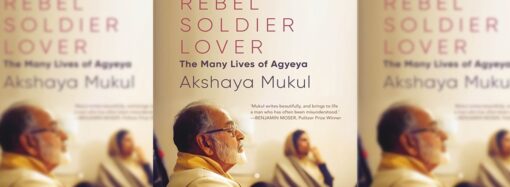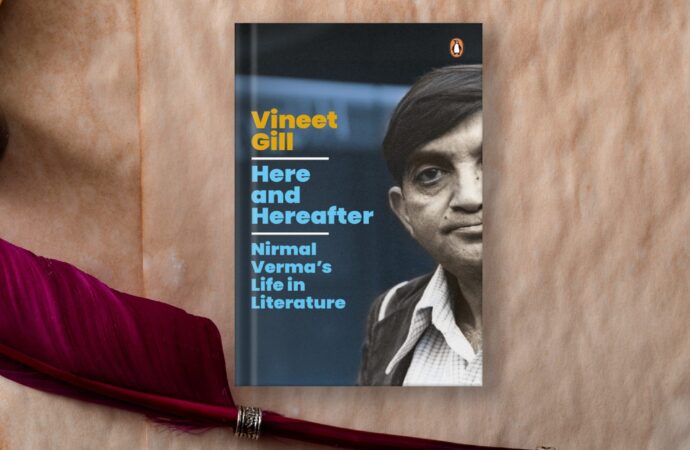Wisdom is often times nearer when we stoop than when we soar – William Wordsworth
The past year led to an advent of my hesitant journey to discover marvels of Hindi literature. It was earlier confined to the periphery of classics that belonged to Premchand, Phanishwar Nath Renu, Muktibodh, Dinkar etc. Little did I know that a new world of European thoughts existed in the milieus of a Hindi author. A book titled ‘Here and Hereafter – Nirmal Verma’s Life in literature provides a detailed account of Verma’s opus, his journey as prolific reader and traveller, and his ideals as a man. The early chapters of the book present a description of an intensive care unit of AIIMS where Verma attained immortality in his sleep. The author opines at this that like all other writers Verma died marginally and peacefully. His transition from a soft to devout Hindu was clearly visible here as he says, “Main Vidhi Vidhaan Ke Saath Jaana Chahta Hoon(I want all rituals to be performed at my funeral).” The author has brilliantly correlated such instances of his life with his work.
Impact of European and World Literature
The book is an ode of a monolingual English speaker to a stalwart of Hindi literature who broke literary traditions of India by bringing in world of European thoughts in his works. Verma was a colonial child who was born in British summer capital, Shimla and acquired his higher education in an anglophile institution of Delhi University. The author describes that Verma’s early fiction sometimes was contiguous to Czech fiction whereas at other times provided socialist realism of Gorky. While his work Teen Ekant(Three Solitudes) appears like a Hindi version of a Woolf’s masterpiece, the interplay of Hindi and English and Verma’s love for various cultures in Cheedon Pe Chaandni(Moonlight on Pines) and Parinde (The Avians) is skilfully narrated by the author. All his works are pulsating symphony synthesised from the prose of Brecht, Hemingway, Camus, Woolf, Renu, T.S Elliot, Nietzsche, Chekhov, Malayaj etc.
Love for Nature
The book along with other things highlights Verma’s love of nature. According to the author, sunlight, mountains, river, trees, and sky were not merely props but were frameworks of his plots and metaphors for human emotion. His writings merged cultural divergences through sensibilities for nature derived from Tagore and Kalidasa of east and Wordsworth and Elliot from west. Here, Verma appeared to concur more with the eastern idea that man and nature are not apart. The book describes how his works such Laal Teen ke Chaat(The Red Tin Roof) is replete with uninhabited, haunting, serene, and primeval moonscape of Shimla. It also takes us to childhood of Verma where he was transfixed on the beauty of sun setting in nearby mountains. It is indeed a Wordsworthian image that evokes one of his lines, “The sunshine is a glorious birth.”
Nirmal Verma – The Man
The book describes Verma as flâneur or a literary nomad or for whom travel was central for his creative practice. In his travels to post-war Europe, the sympathy in his works had an undertone of bewilderment about extremities of human nature as an external observer. While attending a Brecht’s play in East Berlin, he was left speechless by the minimalist architecture of Europe’s most radical theatre. His work Cheedon Pe Chaandni(Moonlight on Pines) presents an illustration of Iceland’s picturesque landscapes with a journalistic flair. The author further describes Verma as pop theorist of reading. Taking a heavy diet of Russian and European literature in adolescence, he found English literature too lightweight. Showing a page from Verma’s diary of 1993, the biographer declares him an ardent re-reader of classics such as Divine Comedy, Bhagwat Gita, War and Peace etc.
The book also presents lucidly Verma’s transition from a college Marxist to an Orwellian progressive writer who was a committed anti-fascist and anti-communist. As a fervent soft-Hindu, he believed that Marxist one size-fits all principle could never work in India. On the other hand, he calls poems such as Raam Ke Shakti Puja and Tulsidas by Nirala as sectarian compositions in an interview. According to the author, he challenged the idea of faux secularism because it nurtured political correctness. Towards the end of the book, the author declares Verma a lover of silence. He opines that Nirmal Verma’s work teaches us that any artist’s first job is to listen to inner silence. He further says that closest word that he could associate towards Verma’s idea of silence was ‘Maun’ and his prose embodies that silence of stillness in letter and spirit.

















